On Turning 21
travels and thoughts from Jan -> Apr
Travels
1.5 months before turning 21, I spontaneously booked flight tickets to San Francisco. It was relatively cheap — SGD 994 for a round trip — and it was planned around making it to Waterloo, Canada, for the 2025 Socratica Symposium, fittingly held in a Canadian ice-hockey rink.
This was a wee bit shorter than my 2023 New York wander, and this time I promised myself less over-analysis and more distillation.
SF
It was my first time in SF.
After being holed up on the edge of mainland Singapore and doom-scrolling AI-billboard memes on Twitter, the real city felt quieter. I wasn’t blown away by how tech-pilled everyone there was. Most work happened behind closed doors; meetings took place in coffee shops and the occasional mass gathering at Dolores on a sunny day.
On day one, I walked across the Golden Gate twice after walking down from Embarcadero to Fort Mason, and rode in a Waymo at night. Between running across SF, Palo Alto and Berkeley, I spent my time building a local food recommender app.
Waterloo
I’d never set foot in Canada, yet the Monday morning AirCanada flight to Pearson International felt like a flying Twitter feed (lol) — I recognised at least 5 folks in the cabin were bound for the same Symposium in Waterloo.
A very kind fella waiting in the same line as me for the fully booked Flixbus to Kitchener guessed correctly that we were both headed to the Symposium. Flixbus North America even liked my post.
I wolfed down dinner, rushed to a meet-up organised by Cory, and found Waterloo Engineering still buzzing at 9pm — undergrads still hard at work with their robot arms (?) while folks who were there for the meet-up (arguably slacking) looked on in amazement.
The next day was the day of the Symposium: which really was a celebration of the work that was created together with friends. Kai and Calvin started piecing Orbital Flush together in a rented U-Haul right about 3pm, five hours later, they somehow wheeled a working prototype onto the showcase floor. I finally met Chandhana in person, witnessed a live proposal, and saw the debut of sperm racing.
The energy was electric. The best part was really friend-maxxing at Hardeep’s Atreides house for 2 days after.
A quick Toronto stop, then back to SF and on to Maui for a breather with my brother before the long hop home to Singapore.
Revisiting Ambition
After 22 months of NS-induced tunnel vision I finally exhaled — helped by Maui sand between my toes and a candid chat with a friend. Taking a break and resetting through distance made it obvious: most of my old blog posts were written from a cramped head-space. And I wasn’t satisfied with the conclusions I’d reached about ambition.
SF surprised me with its everyday calm, while Waterloo’s buzz felt more like genuine peer enthusiasm—friends rallying around months‑long passion projects—than the abstract hype I’d imagined from afar. But the moment I reopened Twitter, the distinction collapsed. The feed flattened both places into an endless stream of wins and hype.
I’m quick to place these highlights on a pedestal. We scroll past mutuals who are one degree removed announcing a seed round, a friend’s first day at OpenAI, someone else shipping a tool that rockets to #1 on Show HN… And envy kicks in.
It’s an almost instinctive reflex: dang this guy is cracked!
When comparing amateurs to elite athletes, it’s easy to draw that line and distance yourself from the greats of the sport. It’s tangible: even well-trained amateurs can’t keep up with the world-record marathon pace for more than a few hundred metres. We feel that viscerally — in the searing pain of legs, lungs and arms. The why is just as concrete: years of mileage, altitude or heat‑adapted living, stage of life (full‑time job vs funded camp), and the hidden tax of chronic over‑training—before genetics even enters the chat.
Stack those variables, and the stopwatch ends up timing entire ecosystems, not just individuals.
Taking a step back, the same principle holds outside sport. Every headline-worthy cracked peer is the product of variables that compound—hustle, mentors, visas, capital—far beyond a Twitter post that goes viral.
So instead of sulking about the gap, I can flip the question: How can I learn from them? What did they do that I’m not already implementing? And beneath that, what goal do I genuinely care about that isn’t just a borrowed status metric?
The key is realising these success stories are always incomplete. Behind the curated spotlights lie countless hidden pieces—failures, pivots, luck, and quirks—that we rarely get to see. Ultimately, everyone’s human. Successes aren't inexplicable magic1; they’re puzzles that can be understood and broken down once you have all the pieces in front of you.
Recognising this helps avoid over-indexing on any single variable—especially age. Age is merely a one-dimensional metric; so much more goes under the hood. Far better to play the cards I already hold—and, wherever possible, hustle to swap a few—than to keep score against someone else’s stopwatch.
Work
February was a scramble to land opportunities. I should’ve started earlier, but I was too locked in on an opportunity that didn’t pan out. When I wasn’t drafting applications, I spent my time fine-tuning Elite Endurance Viz and Ho Jiak Bo, and filling in the occasional university application form.
Most leads fizzled, but I managed to land an internship at Menlo! Going through a live coding interview was harrowing, but I think I made it out the other side alive. I love the pace and energy that the team has, and will continue to grok as much as possible before I head off to school in the fall.
Birthday Week → ICLR
Two weeks after starting at Menlo, I cashed in a pre-booked week off; by the time I landed back in Singapore, the calendar had queued up birthdays, an AI showcase and ICLR with zero buffer days.

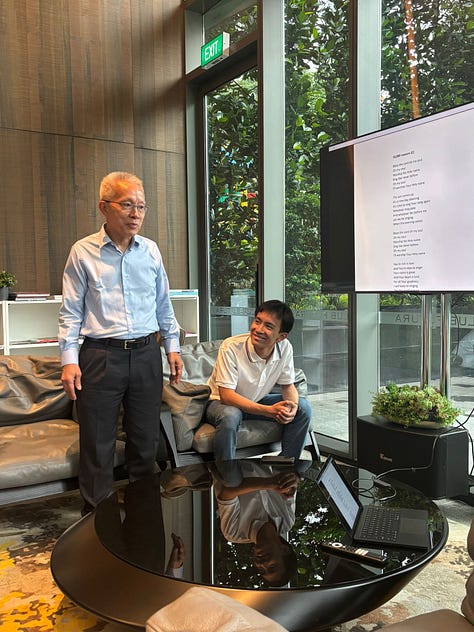
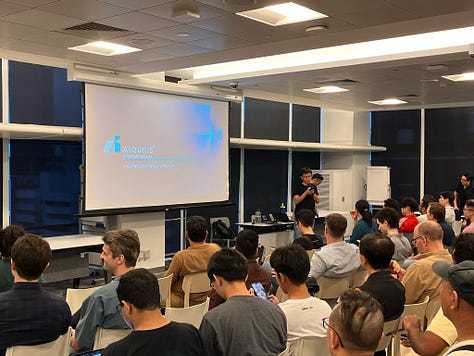

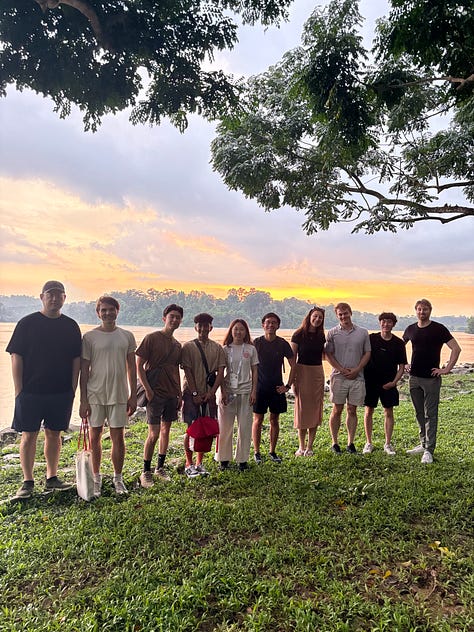
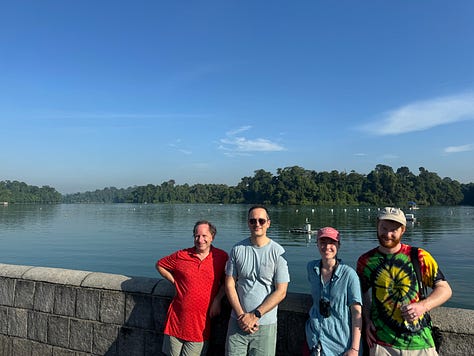
Thursday: land from a short Osaka trip
Friday: Mum’s surprise birthday dinner
Saturday: my first surprise party, courtesy of family!
Tuesday: host the Singapore AI Showcase
Thursday: cram slides for two Friday talks
Friday: present twice, sneak into ICLR (and get booted out lol)
Sat-Mon: boar-hunting tour guide for hawker stalls and nature trails
The actual birthday (Wednesday) passed in a blur — no point posting Instagram stories, whose approval am I ultimately chasing?
What I cherished the most were the opportunities to hang out with the smartest researchers in the world. Watching SOTA researchers (lol) mesmerised by MacRitchie monkeys made me realise that curiosity powers great work2. As the least technical in the group, that left me with the steepest learning curve — one I could tackle only if I balanced these intense bursts with quieter hours at the keyboard.
Looking Ahead
So until August, I’ll be documenting most of what I’m learning at Menlo — everything from engineering to seeing how the company is run.
Then I’ll head off to school. Most of my female batch‑mates are already halfway through university; I’ll arrive as a freshman, nearly three years older than the median first‑year. That used to bother me, until I noticed how the weight of a year shrinks with age—huge at 18, negligible at 30. No sense over‑indexing on the number now.
Until then, I’ll keep shipping :D.
Adam recommended this blog post and one thing that stuck was really that heroes are human; most things can be figured out.
It’s also interesting how the chillest, most accomplished folks rarely feel the need to talk shop (especially in settings outside of the conference).


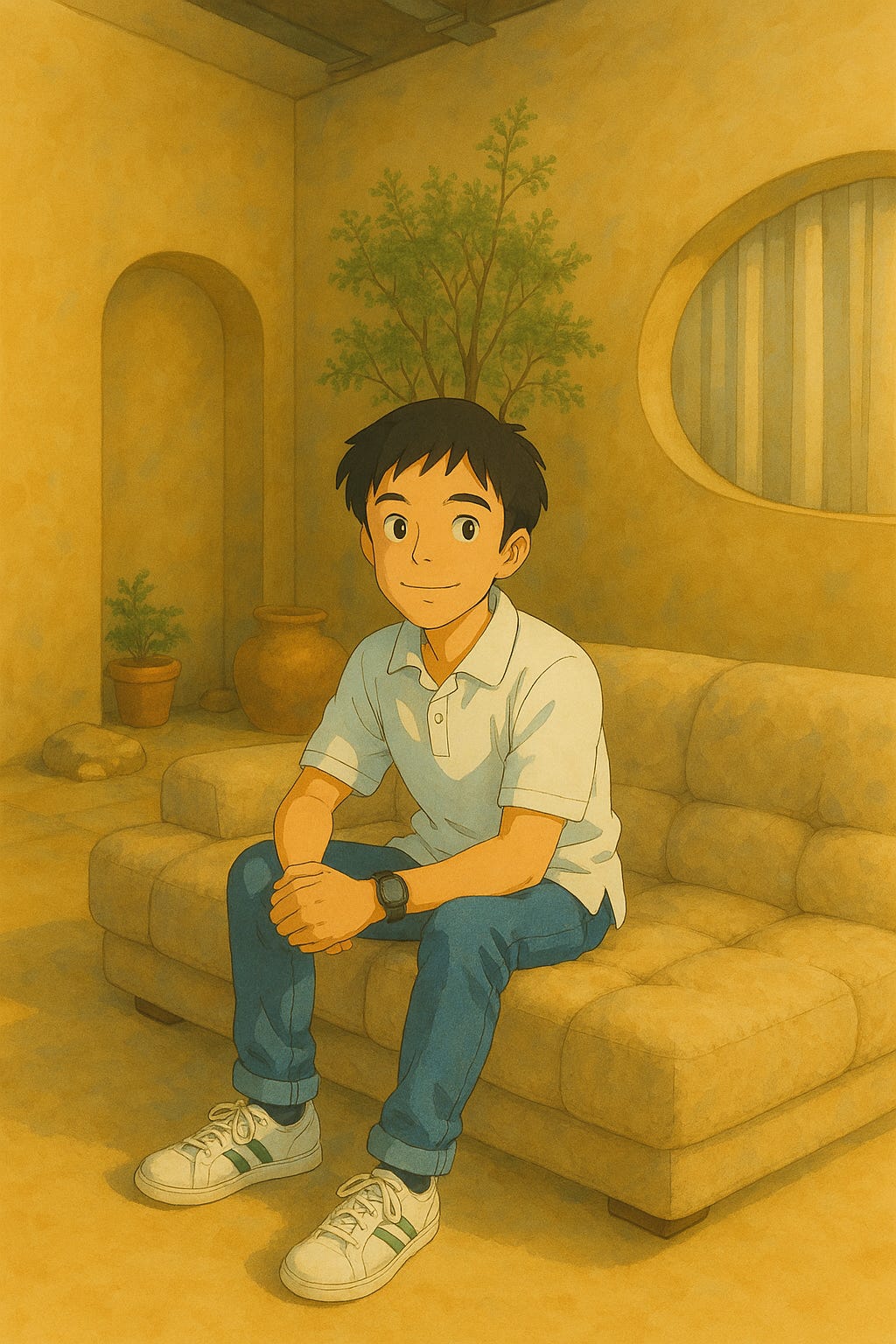

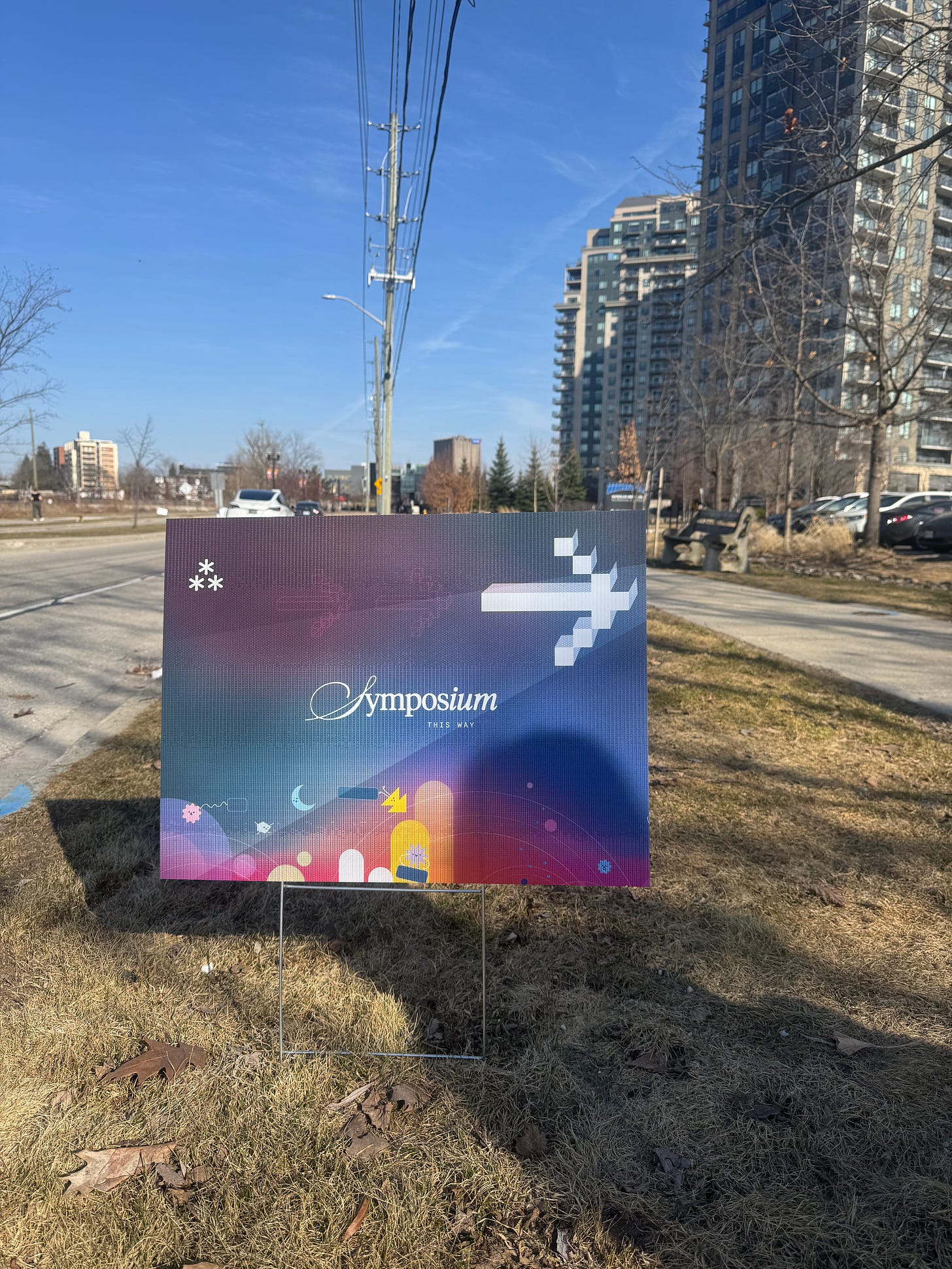
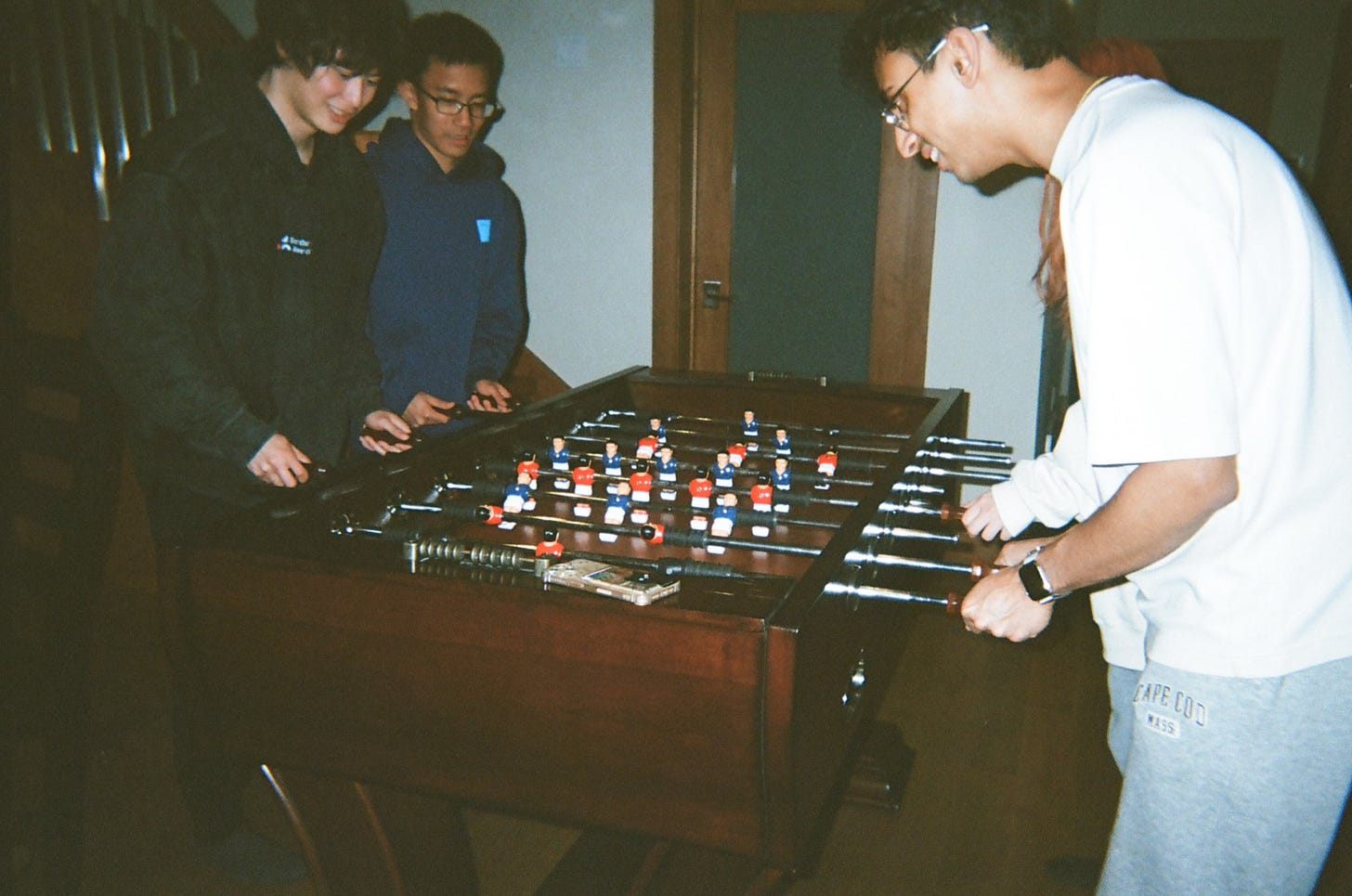

Turned 21 yesterday. I love your lifestyle just from this one piece. You seem very ambitious! Me too